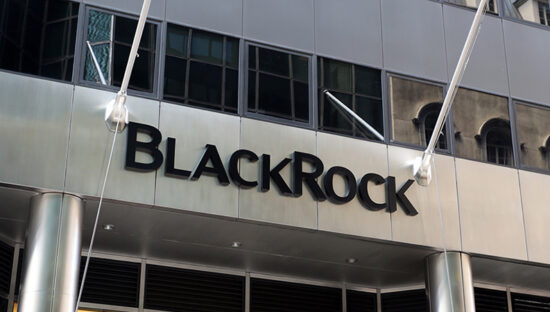Whenever the UK Treasury or HM Revenue & Customs (HMRC) refer to “fair taxation” what they really mean is considerably increased taxation.
An example of this came in May last year when a consultation document entitled Ensuring fair taxation of residential property transactions
was published.
The resulting draft legislation was published on 11 December 2012 outlining the new taxes and charges that will have to be paid by offshore companies which own property in the UK worth over £2m. There were some significant changes from the consultation paper. Next, the actual legislation was included in the Finance Bill 2013 and again showed changes from the draft, not least in the name of the new annual charge.
The main features of the legislation will only affect properties which either are, or will become, valued at more than £2m and which are owned by “non-natural persons” – this being a reference to companies, partnerships, funds and the like, not to persons with strange personal habits.
Avoiding IHT
Previously many buyers of UK property chose to register their properties in the name of an offshore company in order to eradicate UK inheritance tax (IHT) which would otherwise be charged at 40% on the whole value of the property, after allowances, upon the death of the owner. If a company owns the property the asset becomes the shares of the company, which is a non-UK asset and therefore not subject to UK IHT, as long as the owner is not UK domiciled.
Owners who are UK domiciled are subject to IHT on their worldwide assets so pay IHT on the shares. Company ownership also facilitated the avoidance of stamp duty and land tax (SDLT) as any subsequent sale of the property could be affected by a transfer of the shares in the company leaving title to the property in the UK unaltered. This allowed the purchaser to avoid SDLT and/or allowed the seller to charge more, or a bit of both.
Pushing the envelope
Offshore companies which own property worth over £2m will now be faced with an annual charge of a minimum of £15,000 and a maximum of £140,000 depending on value. The new tax was to be called the Annual Residential Property Tax (ARPT). In the legislation it was called the Annual Tax on Enveloped Dwellings (AETD). I wonder which committee came up with that one? The companies will also pay 28% capital gains tax (CGT) on resale.
Corporate trustees are not subject to these new taxes. There is also an exemption for bona fide business assets owned by companies. This would apply where the property is rented out exclusively to third parties. Those who have purchased property purely as a buy-to-let investment may well be able to rely on this and ignore the new legislation. Those who do, or may, live in their property will be affected.
The best structure going forward will depend on a variety of factors including the tax residency and domicile of the owners and any intended beneficiaries of the trust, or even occupiers of the property.
Italian job
Let us consider the example of Mr Guiseppe Sixpack (GS) an Italian resident and domiciled individual who intends to move to the UK during the current tax year (i.e. between 6 April 2013 and 5 April 2014). GS, through an offshore company, holds the freehold of a residential property in London which he will live in. The property was acquired in November 2001 for £1,400,000 and is currently valued at £4,000,000. It is not currently rented out and there is no mortgage.
As the property was beneficially owned by a company on 1 April 2013, the company will be subject to ATED (Part 3 of the Finance Bill 2013). The property’s value as at 1 April 2012 will determine the liability to ATED. The company is currently liable to pay a charge of £15,000. The first chargeable period runs from 1 April 2013 to 31 March 2014. The company must file a return for the first chargeable period by 1 October 2013 and pay the charge by 31 October 2013 .
This is a transitional measure and the return for the second chargeable period, commencing 1 April 2014, must be filed by 30 April 2014. The tax for the second chargeable period must be also paid by that date. The property will need to be re-valued on 1 April 2017 to cover the ATED returns for the five years starting on 1 April 2018. However, until 30 April 2018, the charge should be limited to £15,000 payable by the 30 April each year. To correctly calculate the charge the property must be independently valued by a professional such as a chartered surveyor.
It is possible for a company to obtain relief where it does not hold the property throughout the whole chargeable period. This is known as interim relief and must be claimed. Broadly, the charge is reduced to reflect the number of days in the chargeable period during which the property was not held in the company, (FB s158(4) sets out the procedure for making the interim relief claim).
For example, if the property were to be sold to a third-party individual on 30 September 2013, the seller company could reclaim 50% of the original charge, which must be paid by 31 October 2013. The precise procedure for claiming the relief and the contents of the ATED Return will be fleshed out by HMRC in supplementary regulations to be published in the summer.
Capital gains tax (CGT)
The legislation provides that a company which holds a property on 1 April 2013 that is within the scope of the ATED charge is deemed to have acquired the property for its market value on 5 April 2013. The FB has inserted a new CGT code into TCGA 1992 to account for ATED-related gains. The calculation of the base cost is found in the new Schedule 4ZZA in TCGA. Refer to paragraph 3(2).
The property was acquired in November 2001 for £1,400,000 and it is assumed that it had a value of £4m on 5 April 2013.
Shadow directorship
If GS were to occupy the property in the future rent free there is a danger that he would be subject to an annual benefit-in-kind tax charge as he would be treated as a shadow director. The case of Dimsey v Alan established that the benefit in kind provisions do extend to shadow directors.
For these three reasons, it is likely to be more tax efficient to consider moving the property out of the company. Mr GS has a number of options to mitigate the applicable taxes.
If the property were gifted to GS there would be no SDLT as there is no mortgage. There should be no charge lifetime IHT as the asset would still form part of the beneficial owner’s estate. However, there would be CGT to pay – if the property at the time of value was worth more than the £4,000,000 April 2013 value. Here there is a nasty trap. If GS was resident when the company sells the property the whole of the gain since acquisition could be attributed to him under s 13 TCGA 1992.
Individual ownership
- There would be no ATED charge from 6 April 2014 onwards provided the transfer was made to the individual before that date.
- There would be no UK CGT on a future disposal provided GS used the property as his main residence throughout the entire period of his ownership.
- There would be no shadow director issues which can arise with corporate ownership.
Disadvantages
- The property would be subject to UK IHT of 40% on GS’s death.
- The ability to mitigate the charge with debt or even bank finance has been severely restricted, as a new s175A IHTA 1984 which severely restricts the deductibility of debt on death has been inserted.
Share sale to new dry trust
This plan would involve GS’s family members establishing a new dry trust (i.e. a single asset holding trust) with a nominal cash sum. GS would sell the company shares to that trust. The consideration would be a loan note equal to the market value of the property on the date of the share transfer. The company would be liquidated by the trust. The liquidation would not cause a SDLT issue as there is no mortgage.
Advantages
- The property would be outside the charge to UK IHT.
- There would be no CGT on a future sale by the trustees.
- There would be no ATED from 1 April 2014.
Disadvantages
- There is a 10-yearly charge of up to 6% on the net asset value of the trust’s UK assets. However the charge should be mitigated by the value of the loan the trust owes to GS on the 10th anniversary. This position needs to be carefully watched. It is possible that the debt may not be deductible under section 162A which is to be inserted into IHTA by the Finance Act. As yet it appears s.162A would not deny a deduction but it may be subject to further amendments before it hits the statute books.
- The trust would need to avoid selling the property, thereby realising a potential gain, when GS is UK resident. Otherwise GS would be subject to UK CGT to the extent that the value of his rent-free occupation could be matched with the gain made by the trust on the sale. The liability would be significant but can be avoided provided GS is not UK resident in the tax year of the disposal and is not caught by the five-year rule noted above.
Non-UK domiciled purchasers should henceforth use a similar trust structure to the above. Domiciled purchasers should consider purchasing via a QNUPS structure.
From the above, it will be apparent that this is a highly technical area and expert advice is, as always, strongly advised.
Howard Bilton is a UK and Gibraltar barrister, professor of law at Thomas Jefferson School of Law, San Diego and Chairman of The Sovereign Group.








